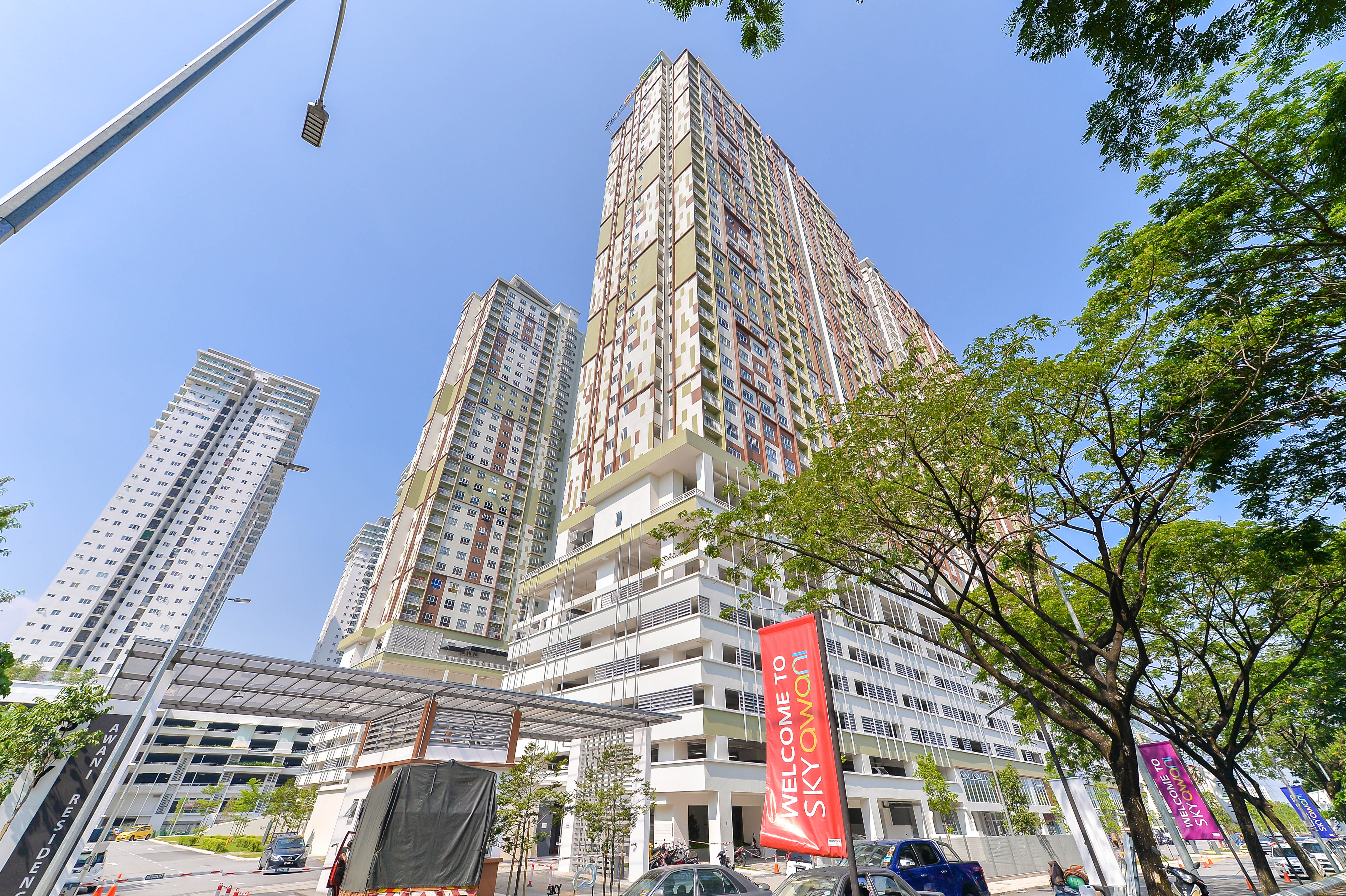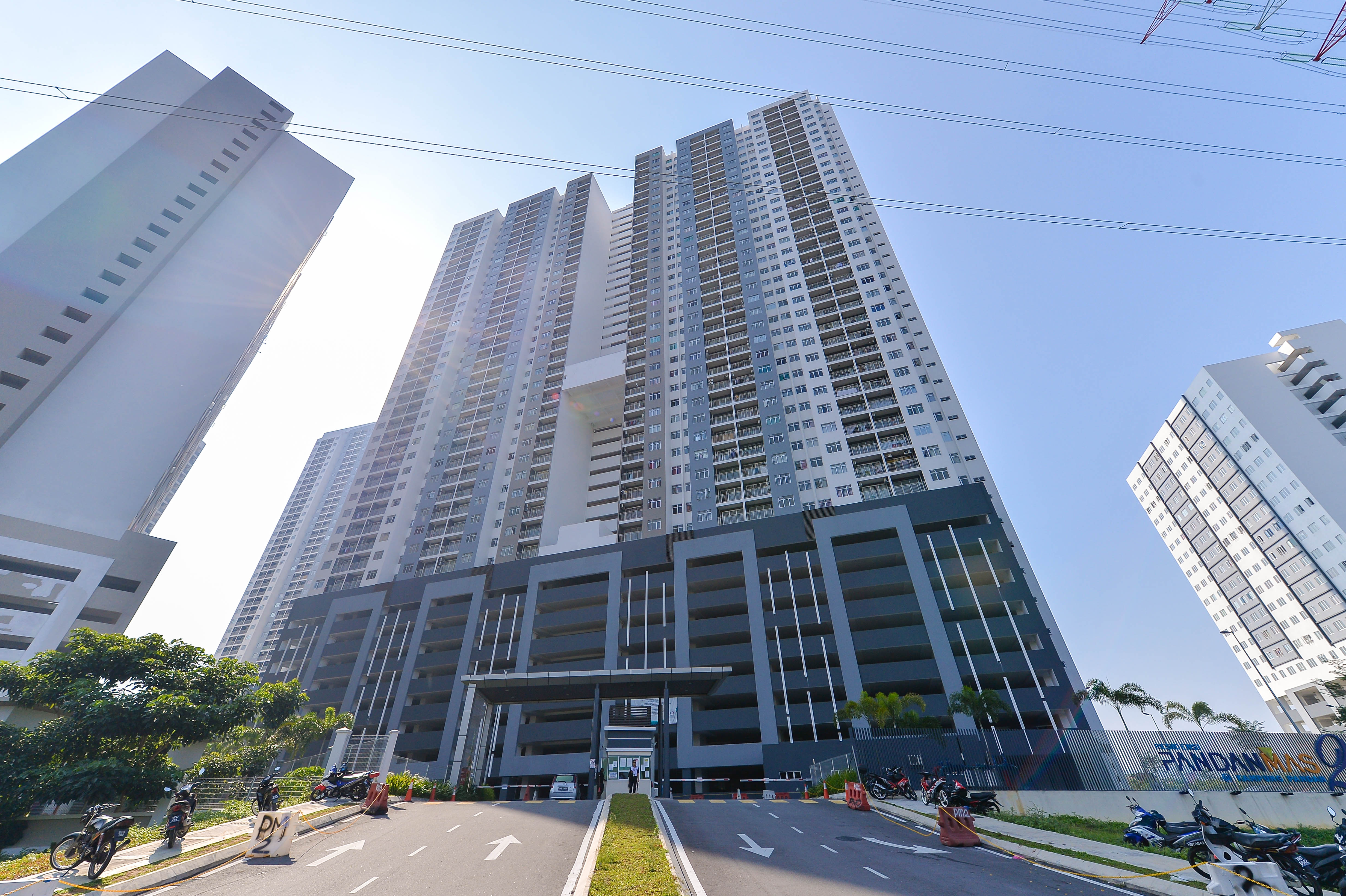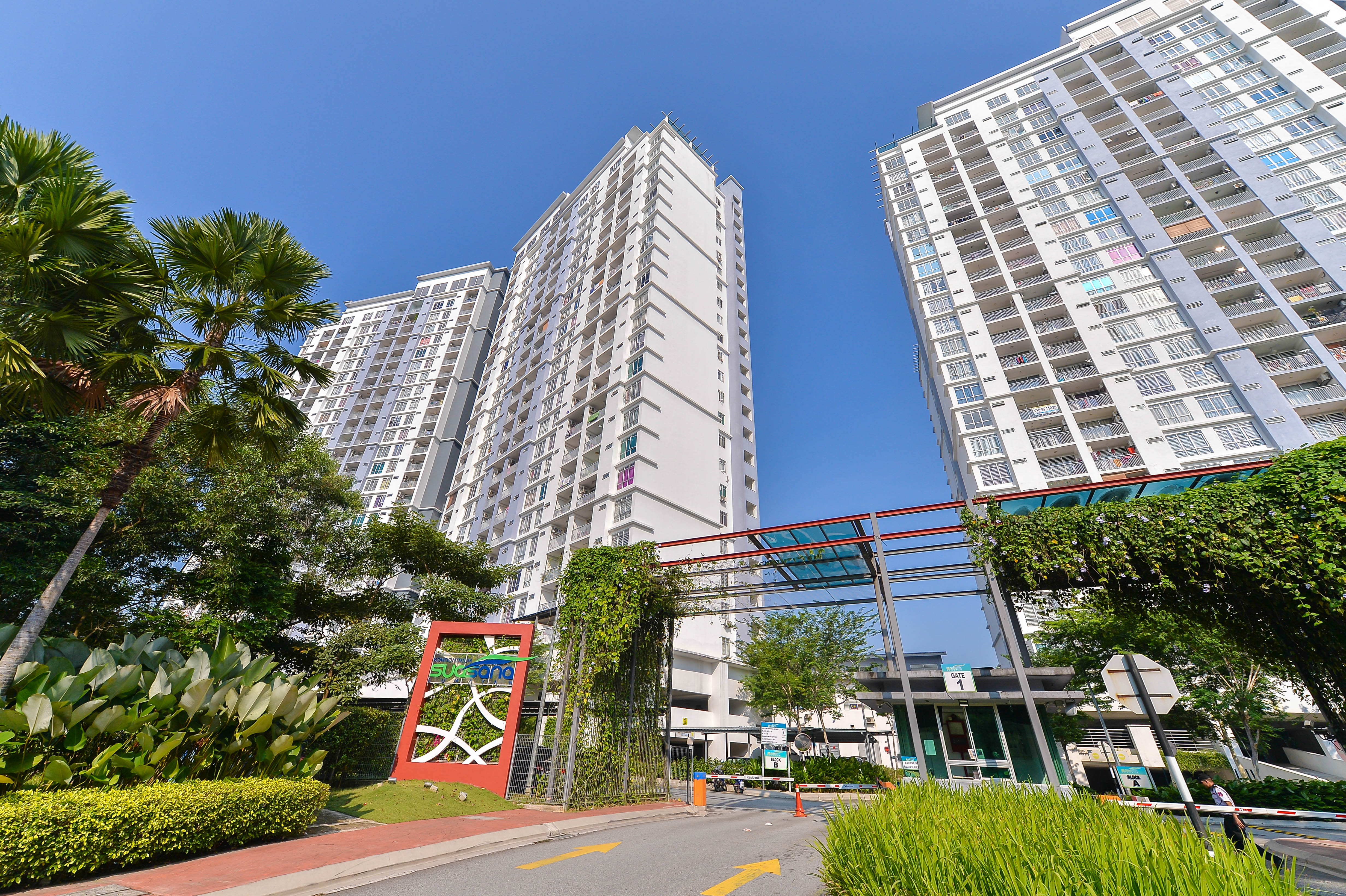 - © Metropolis
- © Metropolis Completed projects include Residensi Pandanmas 2 comprising 1,920 RUMAWIP units - © Metropolis
Completed projects include Residensi Pandanmas 2 comprising 1,920 RUMAWIP units - © Metropolis Residensi Sky Awani with 1,226 units - © Metropolis
Residensi Sky Awani with 1,226 units - © Metropolis Residensi Suasana Lumayan with 900 units. - © Metropolis
Residensi Suasana Lumayan with 900 units. - © Metropolis
City
Kuala Lumpur
Main actors
City Government, Private Sector
Project area
Metropolitan Area
Duration
Ongoing since 2013
An innovative affordable housing policy
RUMAWIP (Rumah Mampu Milik Wilayah Persekutan) is an initiative of Kuala Lumpur City Hall (KLCH) to help low and middle-income groups buy their first home.
RUMAWIP offers three categories of affordable housing: studio or one room, two rooms and three rooms with strata title ownership. RUMAWIP units sell below the market price. They can have facilities such as a swimming pools, gymnasiums and playgrounds with easy accessibility. A ten-year moratorium is imposed where the purchased house cannot be transferred or sold to a new owner without the government’s permission.
Through a cross-subsidy model, KLCH encourages the participation of the private sector in pursuing affordable housing through the development of density incentives and an exemption of charges based on RUMAWIP percentage. The regulated mixed development concept created by KLCH adds verve in developing affordable housing in the city, and continuous support from the private sector has greatly contributed to the success of the initiative.
Kuala Lumpur City (243 sq. km) is home to 1.7 million people and is expected to grow to 2 million by the year 2020. With more than 430,000 housing units today, this number continues to grow and contributes significantly to the urban footprint of the city. Meeting people’s need for housing is a strategic objective of KLCH. This entails providing an adequate supply of housing for all income levels and ensuring that living spaces, community needs, and the built environment meet the basic requirements of city living.
The Kuala Lumpur Structure Plan Housing Policies (KLSP) serve as a guideline and include four main pillars for housing policies:
- KLCH shall encourage the private sector to develop a wider choice of innovative housing
- KLCH shall ensure there is sufficient affordable housing to meet the needs of the population
- KLCH shall encourage the building of low- and medium-cost housing
- KLCH shall ensure proper distribution of housing units by type
Factors such as income, housing prices and the availability of financing are the common housing affordability issues faced especially by lower and middle-income groups in Kuala Lumpur. Affordability issues are aggravated further by rising development costs and increased housing demands due to urban migration and speculative house prices, thus pushing housing prices beyond the reach of many households.
In view of this, the RUMAWIP policy was introduced in April 2013 by the Ministry of Federal Territories as an initiative to provide an opportunity for house ownership among the middle-income groups in Kuala Lumpur, Putrajaya and Labuan. It specifically targeted 55,000 affordable housing units to be built in Kuala Lumpur.
Within this context, the middle-income group is defined as having a household income of USD 1,111 to 2,450, not being eligible to buy low-cost housing and being unable to purchase high-end housing.
As such, the RUMAWIP policy was developed based on 4 objectives:
- Sufficient housing supply to cater to target groups
- Efficient implementation strategy in accordance to the Delivery System policy
- To balance supply and demand for affordable housing projects
- Enhancement of living standards and liveability
In general, the initiative imposed a design principle of a minimum of 800 square feet with 3 rooms and 2 bathrooms for the middle-cost units costing RM 300,000 (USD 75,528), or below 700 square feet with 2 rooms and 2 bathrooms for low to middle cost units ranging from RM 42,001 (USD 10,574) to RM 150,000 (USD 37,764). All RUMAWIP projects must provide basic community facilities such as a prayer room, parking spaces, a playground, a multipurpose hall or a guardhouse.
In order to avoid short-term housing price speculation, all units sold are subject to a moratorium of 10 years to create a buffer period to ensure that new stocks of housing come at affordable prices (KRI, 2015). During this period, the government will reserve the right to preclude home buyers from selling their houses until the period ends as clearly stipulated in the house purchase agreement, unless to their closest family members or heirs such as parents, spouses or children.
The main eligibility criteria for buyers is as follows:
- Malaysians 18 years of age or older at the time of application
- Gross income for single applicants must not exceed RM 10,000 (USD 2,548)
- Gross income for married applicants must not exceed RM 15,000 (USD 3,822). Priority will be given to applicants that do not own any property in Kuala Lumpur
- Priority will be given to applicants that were born, live or work in Kuala Lumpur
RUMAWIP projects are developed on both government-owned land and privately owned land. RUMAWIP projects on government-owned land include a diversification of development projects. KLCH imposes a minimum of 50% of total residential units for affordable housing units for the public. Many residential development plans on private land must dedicate a minimum of 30% of total residential units to affordable housing.
Since 2015, KLCH has been considering redevelopment projects for public housing areas over 40 years old, which are to be developed into higher-quality sustainable housing projects for a more resilient community. Joint venture, land sales and new ventures are privatization projects that are primarily driven by shifting the cost of development to the private sector, reducing public consumption in providing more affordable housing to the targeted group.
The Lead agency for the project is Kuala Lumpur City Hall (KLCH). RUMAWIP received no subsidies or funds from the Federal Government. Projects are developed by private developers and project feasibility is increased with cross subsidies for those purchasing their first home in Kuala Lumpur.
As of January 2018, Kuala Lumpur has surpassed the target of 55,000 affordable housing units with a total of 55,958 units; 3,662 units completed, 26,467 units under construction and 25,829 planned and approved units.
With respect to Sustainable Development Goal 11 (SDG 11) – Making cities and human settlements inclusive, safe, resilient and sustainable as stated in the New Urban Agenda, RUMAWIP policy is effective in ensuring access to adequate, safe, affordable housing, basic services and upgrading slum areas. Through the Local Agenda 21 (LA21) KLCH engages with the civil society in the development of Kuala Lumpur. Responses and comments from the public are incorporated into the strategy for future policy improvement of RUMAWIP.
Certain challenges make the RUMAWIP policy no easy task; for example, the cost of land in Kuala Lumpur has far outpaced the income level for the targeted group. High land prices, small plots, complimentary usage and site constraints all contribute to an increase in housing prices. Because of a focus on correcting and minimizing the cost of development, acceptance of development requirements by the private sector proved to be the main challenge to KLCH.
Without a subsidy from the Federal Government, even the best strategy has a limited capacity to convince developers to reduce profits and increase construction costs with price capping at RM 300,000 (USD 75,528), as the natural tendency for the private sector is to seek profits.
Among the 90,646 registered purchasers as of January 2018, the challenge for first-time home buyers is to equip themselves with the proper knowledge such as financial access and an understanding of other costs or fees involved before purchasing their houses. Many first-time buyers in Kuala Lumpur are unaware of the need to provide 10% of the purchase price upon signing a home purchase agreement.
Since 2012, Bank Negara Malaysia has implemented stricter lending guidelines to regulate and reduce household debts. The maximum age for housing loans is only 60 years old, and for early birds with a head start, monthly loan payments will be much less as compared to latecomers, hence giving a different meaning to individual affordability.
The RUMAWIP policy is ingrained in the understanding of societal demands and the balancing of the cost of land driven by the private sector. RUMAWIP has improved living standards by mixing low-income residents with middle-income residents for social balance, and empowering low-income residents to own middle-cost houses, especially in redevelopment projects. As with many new residential projects, these provide new environments and an improved lifestyle, making society more resilient and sustainable with an appropriate housing supply and governance. The effect of innovative cross-financing by developers also improved housing profit margins with the intensification of value and fast delivery being the key to selling affordable housing units quickly.
External links / documents
On Map
The Map will be displayed after accepting cookie policy